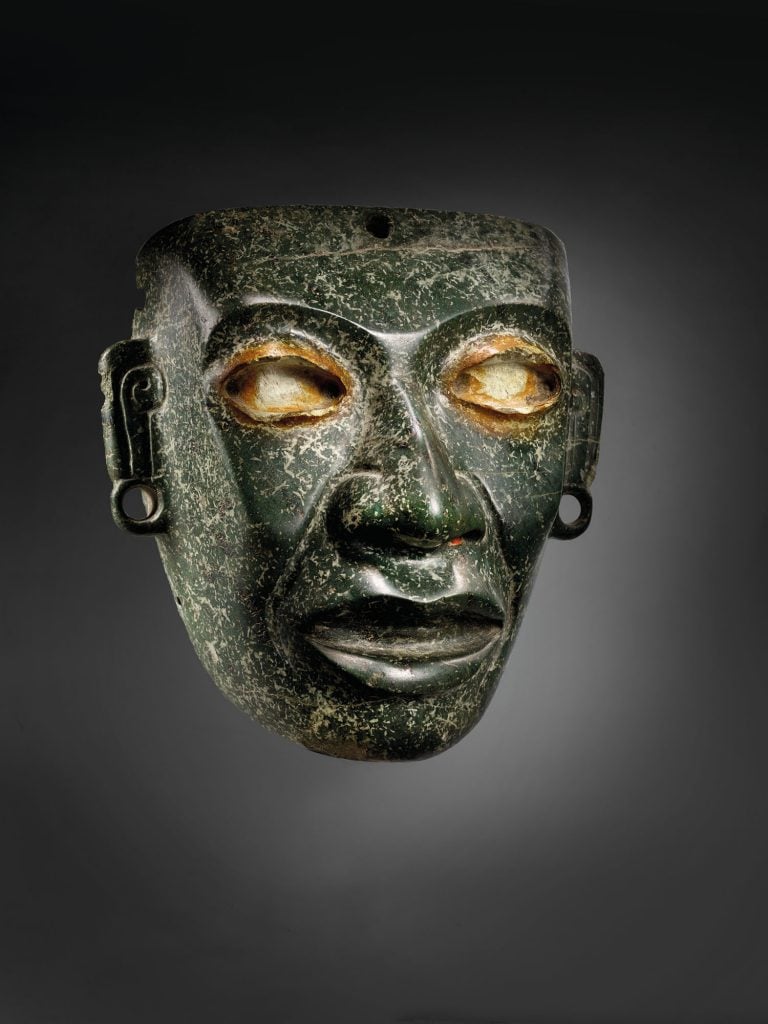Auctions
Undaunted by Restitution and Authenticity Claims From Mexico, Christie’s Pulls in a Solid $3 Million at Its Sale of Pre-Columbian Art in Paris
The auction house said all the works were "legitimately sold."

The auction house said all the works were "legitimately sold."

Eileen Kinsella

A sale of pre-Columbian art at Christie’s Paris yesterday yielded a robust €2.5 million ($3 million), the auction house’s highest total yet for the category. Of the 39 lots on offer, only three failed to sell.
The figures achieved at the sale, titled “Quetzlcoatl: The Plumed Serpent,” are even more remarkable given recent authenticity concerns raised by a Mexican heritage organization, which also claims repatriation rights to many of the items.
The National Institute for Anthropology and History in Mexico came forward recently with a request for Christie’s to withdraw at least 30 pre-Hispanic works from the sale. It argued that most of the works are part of Mexico’s cultural patrimony, and that three other items in the sale are fakes (based on indications that they were recently fabricated). The institute filed a complaint last month about the auction with the attorney general’s office in Mexico.
“Christie’s takes the issue of cultural property extremely seriously,” a representative for the auction house said in a statement. The objects in question were “legitimately sold as part of a transparent and legally compliant public sale process,” the statement read. “Under no circumstance would Christie’s knowingly offer a work of art where there are valid concerns over authenticity or where we know the property to have been looted or illicitly obtained.”
Christie’s noted that it works in partnership with the Central Office for the Fight against Trafficking in Cultural Goods and France’s Conseil des Ventes Volontaires and that it had not received any evidence that would challenge the lawfulness of the sale.
The Mexican institute did not respond to a request for comment.

Veracruz figure of Cihuateotl, (env. 600-1000 AP. J.-C.). Courtesy of Christie’s Images Ltd.
The top lot in the sale was a Veracruz figure of Cihuateotl, which sold for a below estimate $600,000 (€500,000). The Cihuateteo in Aztec mythology were divine women who died during childbirth, according to Christie’s experts. Since the Aztecs considered childbirth a form of battle, its victims were honored as fallen warriors.
The second highest lot was a striking green Teotihuacan serpentine mask that was once owned by esteemed dealer and collector Pierre Matisse, the third son of artist Henri Matisse. These funerary masks have been treasured since the 14th century, and were likely attached to mummy bundles and possibly used in daily rituals. It sold for $527,000 (€437,500).

Veracruz Stone Effigy Yoke, (450-650 AP. J.-C.). Courtesy of Christie’s Images, Ltd.
The third highest price, of $90,000 (€75,000), was for a Veracruz stone effigy yoke, carved as a compact and broad-faced frog to represent the “Earth Monster” known as Tlatecuhtli, with large eyes and a tongue projected downward. The yoke is a representation of a lighter ceremonial guard.
Following the sale, Christie’s said the results reinforced its position that there is strong demand for “a legitimate market for pre-Columbian art in which we have played a role for several years. We are committed to this category, and both sharing and celebrating to all communities the arts and culture from different regions and historic periods.”